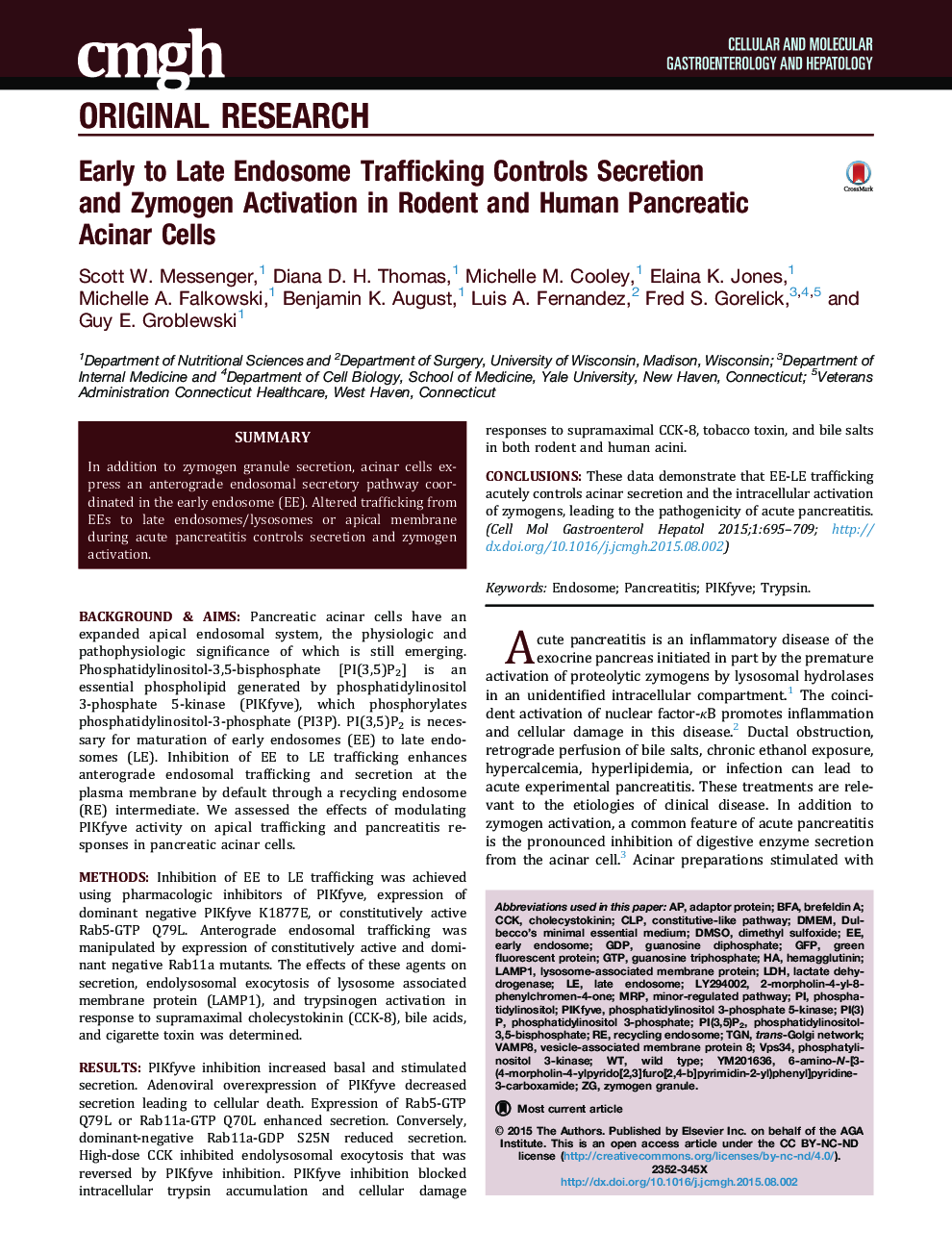| Article ID | Journal | Published Year | Pages | File Type |
|---|---|---|---|---|
| 2042456 | CMGH Cellular and Molecular Gastroenterology and Hepatology | 2015 | 15 Pages |
Background & AimsPancreatic acinar cells have an expanded apical endosomal system, the physiologic and pathophysiologic significance of which is still emerging. Phosphatidylinositol-3,5-bisphosphate [PI(3,5)P2] is an essential phospholipid generated by phosphatidylinositol 3-phosphate 5-kinase (PIKfyve), which phosphorylates phosphatidylinositol-3-phosphate (PI3P). PI(3,5)P2 is necessary for maturation of early endosomes (EE) to late endosomes (LE). Inhibition of EE to LE trafficking enhances anterograde endosomal trafficking and secretion at the plasma membrane by default through a recycling endosome (RE) intermediate. We assessed the effects of modulating PIKfyve activity on apical trafficking and pancreatitis responses in pancreatic acinar cells.MethodsInhibition of EE to LE trafficking was achieved using pharmacologic inhibitors of PIKfyve, expression of dominant negative PIKfyve K1877E, or constitutively active Rab5-GTP Q79L. Anterograde endosomal trafficking was manipulated by expression of constitutively active and dominant negative Rab11a mutants. The effects of these agents on secretion, endolysosomal exocytosis of lysosome associated membrane protein (LAMP1), and trypsinogen activation in response to supramaximal cholecystokinin (CCK-8), bile acids, and cigarette toxin was determined.ResultsPIKfyve inhibition increased basal and stimulated secretion. Adenoviral overexpression of PIKfyve decreased secretion leading to cellular death. Expression of Rab5-GTP Q79L or Rab11a-GTP Q70L enhanced secretion. Conversely, dominant-negative Rab11a-GDP S25N reduced secretion. High-dose CCK inhibited endolysosomal exocytosis that was reversed by PIKfyve inhibition. PIKfyve inhibition blocked intracellular trypsin accumulation and cellular damage responses to supramaximal CCK-8, tobacco toxin, and bile salts in both rodent and human acini.ConclusionsThese data demonstrate that EE-LE trafficking acutely controls acinar secretion and the intracellular activation of zymogens, leading to the pathogenicity of acute pancreatitis.
